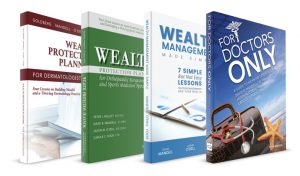One of the most important factors in assessing the financial health of your practice is cash flow. Your CPA and financial advisors will likely spend a lot of time with you poring over financial statements. They will analyze your profit and loss statement and your balance sheet. They will discuss the merits of various statements analyzing production by physician or revenue by location. This is all important and necessary—but positive cash flow is the best indicator of sustainability.
Understanding your cash flow, and using it to your best advantage, can be the difference between a profitable, successful, growing dermatology practice and one that limps along, barely getting by. Most of you are aware of the basics of cash flow. Positive cash flow is good, negative cash flow is not good. But have you really taken the time to determine how you can use cash flow to your advantage? Are you maximizing your business capital by managing your receivables and payables and by properly structuring capital expenditures and debt? This article serves as a refresher on the basic tenets of cash flow.
Receivables are the lifeblood of most medical practices. Having a handle on your receivables is paramount to a financially healthy practice. What percentage of your receivables are you actually collecting? How many days does it take? Are some of your payers paying significantly faster than others? If so, keep this in mind as you renegotiate contracts with insurance carriers. Is your staff coding properly to ensure quick turnaround on collecting receivables? Reducing the days in receivable by following up with slow payers or by ensuring that the bill is correct the first time can mean you get paid more quickly and spend less payroll having a staff member hunt for cash.
It is also important to properly manage your payables. Paying vendors on time reduces costs associated with late payments. However, paying a vendor too early generally doesn’t make sense for your business. Does your payables clerk pay attention to payment terms on invoices? Have you monitored the system to make sure you aren’t being hit with late fees? Are you tracking costs to make sure your vendor price increases are reasonable? When was the last time you bid out the services your vendors are providing to make sure their costs are competitive?
Capital needs for your dermatology practice can be a big drain on your cash flow. With the low-interest- rate environment we are currently experiencing, you may be able to use leverage to your advantage. A capital lease of equipment at a low interest rate may be more advantageous than an equipment purchase utilizing your cash. A line of credit for the business may be utilized during periods of lower cash flow at a relatively low cost. If you can finance at a 3.5 to 4 percent rate, you are likely better off paying interest rather than using your own funds. You can generally invest your own funds and get a better return. Debt can free up capital at a very low cost as long as it is properly managed.
As you review your financial situation with your most trusted advisors, make sure that cash flow is being reviewed and discussed along with profitability and taxes so you can ensure that your business is being run as efficiently as possible.
SPECIAL OFFERS: To receive a free hardcopy of
Wealth Protection Planning for Dermatologists or
For Doctors Only: A Guide to Working Less and Building More, please call 877-656-4362. Visit
www.ojmbookstore.com and enter promotional code AMSPA for a free ebook download of these books for your Kindle or iPad.
 Carole Foos, CPA
Carole Foos, CPA, is a tax advisor and co-author of more than ten books for physicians, including
Wealth Protection Planning for Dermatologists. She is a principal of the wealth management firm OJM Group
www.ojmgroup.com, and can be reached at 877-656-4362 or carole@ojmgroup.com.
Disclosure: OJM Group, LLC. (“OJM”) is an SEC registered investment adviser with its principal place of business in the State of Ohio. OJM and its representatives are in compliance with the current notice filing and registration requirements imposed upon registered investment advisers by those states in which OJM maintains clients. OJM may only transact business in those states in which it is registered, or qualifies for an exemption or exclusion from registration requirements. For information pertaining to the registration status of OJM, please contact OJM or refer to the Investment Adviser Public Disclosure web site www.adviserinfo.sec.gov.
For additional information about OJM, including fees and services, send for our disclosure brochure as set forth on Form ADV using the contact information herein. Please read the disclosure statement carefully before you invest or send money.
This article contains general information that is not suitable for everyone. The information contained herein should not be construed as personalized legal or tax advice. There is no guarantee that the views and opinions expressed in this article will be appropriate for your particular circumstances. Tax law changes frequently, accordingly information presented herein is subject to change without notice. You should seek professional tax and legal advice before implementing any strategy discussed herein.






